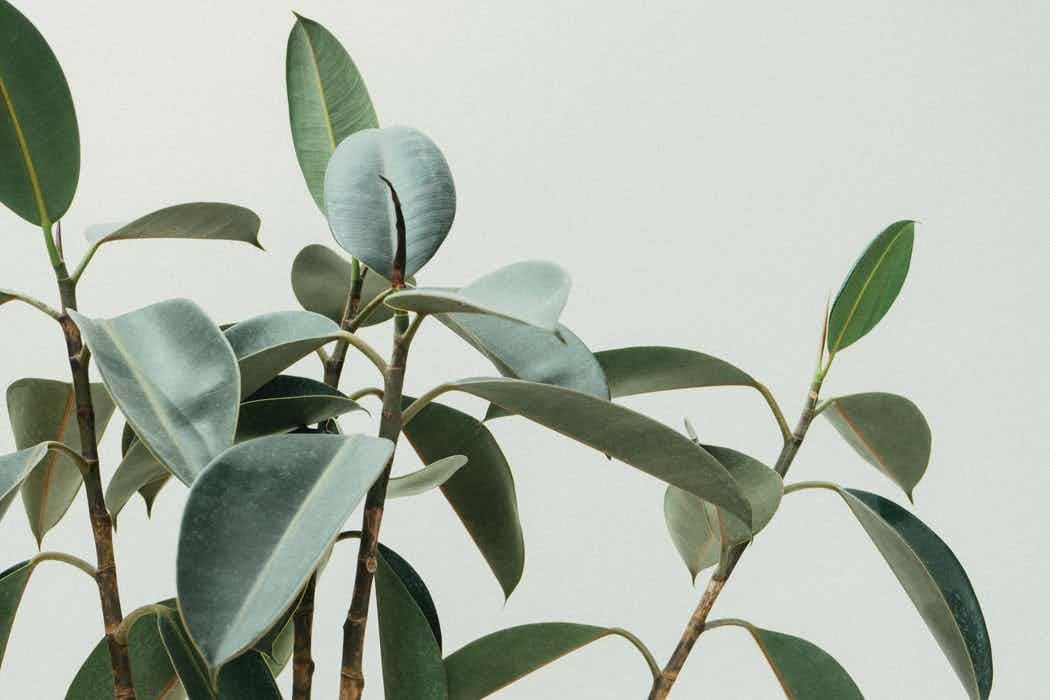Brits have always been well known for their gardening, so it probably comes as no surprise that we love our houseplants too. Houseplant ownership has always been high in the UK but is climbing once again with a 50% rise in 2020 according to the RHS.
Our passions for gardening aren’t going out of fashion as we get older either.
Evidence suggests that millennials are joining middle and older-aged gardeners in flying the flag of the Great British Garden.
All in all, it looks like houseplants will be calling our houses their homes for the foreseeable, and that’s great - they’re aesthetically beautiful, yield powerful health benefits and can significantly enhance the decor of interior spaces.
Some houseplants have been shown to purify the air and remove intoxicants - if this is what you’re looking for, then here are 5 houseplants that will purify your air.
We also spoke to Peter Burks, Chief Executive of the Garden Centre Association, who told us: "Houseplants are a great addition to your home, not only for the physical health benefits but also for the feeling of well-being they bring having a bit of nature to enjoy inside your home, and they are easy to care for too."
For more houseplant ideas, read on!
Anatomy of a houseplant
What characteristics make a good houseplant?
First and foremost, houseplants need to be comfortable in plant pots. Plants with low nutrient and water demand are useful for staying healthy in lower light conditions with dryer, less naturally enriched soil. Slow growing plants can also be advantageous to prevent them from becoming unruly or overly potbound.
Luckily, that still leaves a vast selection to choose from!
So, with that mind, here are the top house plants to buy in 2021.
Flowering plants
There’s nothing quite as useful for adding a splash of colour and life to your house than a beautiful flowering house plant.
Orchids
Orchids are a very diverse family of flowering plants covering some 28,000 varieties. Famous for their ornate, beautiful flowers and bold colours, orchids are among the most popular houseplants of all time.
You can keep a few different species of orchids inside, but few are as popular as the Pansy Orchid (Miltonia).
The Moth Orchid is another excellent option. Both are reasonably easy to look after in warm rooms with diffuse light, though the Pansy Orchid is generally less tolerant to heat. Lady's Slippers Orchids and Cattleya Orchids are two other species to consider.
Madagascar Jasmine (Stephanotis floribunda)
Jasmine plants have long been cultivated for their fragrance - the Madagascan Jasmine is a lovely way to bring that scent into your home the natural way.
This is a climbing plant, so it’ll need room to express itself vertically.
Conservatory walls are ideal but anywhere with decent bright light should be fine. It tolerates heat reasonably well, but extremely bright conservatory spots could damage the foliage if it isn’t kept moist.
Lilies
Lilies grow well indoors including the Peace Lily, Kaffir Lily and Oriental Lily and many others. Different lilies bloom at various points in the year, including throughout summer, spring and winter. For example, the Kaffir Lily blooms in November and December.
Despite their ornate, delicate-looking flowers, lilies are quite hardy and do well in mild sunny spots.
Large indoor plants
Do you have something more dramatic in mind? Larger houseplants are also becoming more popular.
According to the RHS, the Swiss Cheese plant was one of the most popular indoor plants last year.
Swiss Cheese Plant (Monstera deliciosa)
In the wild, these formidable but fascinating looking plants can grow to some 60ft tall! Don’t worry, though; they’re easy to train to smaller pots and are relatively tame for a fast-growing plant.
This plant has an excellent reputation for air purification too, hence why it’s skyrocketed in popularity in recent years.
Kentia Palm (Howea forsteriana)
A tall and elegant indoor palm, the Kentia palm is perfect for corner spots and other parts of the room where it can extend northward. It’s a very hardy plant that requires watering just twice a week even in summer and will tolerate direct but reasonable light well. It also rates as another exceptional plant for air purification.
Dracaena Song Of India (Dracaena reflexa) and Dragon Tree (Dracaena marginata)
The Dracaena group of plants contains many beautiful smaller trees that are ideally suited for indoor cultivation. The Dragon Tree is one of the most popular, a tall-growing palm-like tree with plenty of lush green foliage.
With thick and interesting stems, dense foliage and a distinct subtropical character, the Song of India plant as it’s commonly known is another popular Dracaena. There is a larger, denser version called the Song of Jamaica too. Both are easy to maintain with weekly watering and mild sunlight.
The weird and wonderful
If you’re looking for something quirky and unique, then you’re once again spoilt for choice. There are many weird and wonderful houseplants out there, from Venus flytraps to pitcher plants and the intriguing Shameplant, which folds up when you touch it.
Christmas Cactus (Schlumbergera)
A cactus that comes out at Christmas?! That’s right! The Christmas Cactus is an extremely hardy cactus that will tolerate medium to bright light and cold conditions. It also rarely needs watering. It has interesting tubular flowers that arrive from November through to late January.
Mother-in-Law’s Tongue (Dracaena trifasciata)
Also known as the Snake Plant, this interesting foliage plant has thick, pointed leaves. It regularly tops lists of ‘indestructible plants’, tolerating dry air and low sunlight well. It remarkably needs just ¼ cup of water every 5 to 7 weeks.
Sempervivum, Aeonium and Echeverias
Also known as Hens and Chicks or houseleeks, Sempervivums, Aeonium and Echeverias are some of the hardiest plants on the planet. Some sprout tall Triffid-like flowers that often have wonderfully intricate components.
Echeverias are extraordinarily diverse and come in numerous colours. Aeoniums are also known as tree houseleeks and can grow fairly tall with bold, purple rosettes of foliage. You can assemble these plants in succulent arrangements alongside aloes and cacti.
String of Pearls (Senecio rowleyanus) and String of Hearts (Ceropegia)
The String of Pearls, a lovely succulent indoor houseplant, is named because it resembles a string of beads. A succulent vine, this creeper plant is tough and is ideally suspended above the ground in an indoor hanging basket. The String of Hearts is another trailing vine creeper that also likes to grow downwards or horizontally across flat surfaces. It can become quite impressive, growing up to 4m long.








